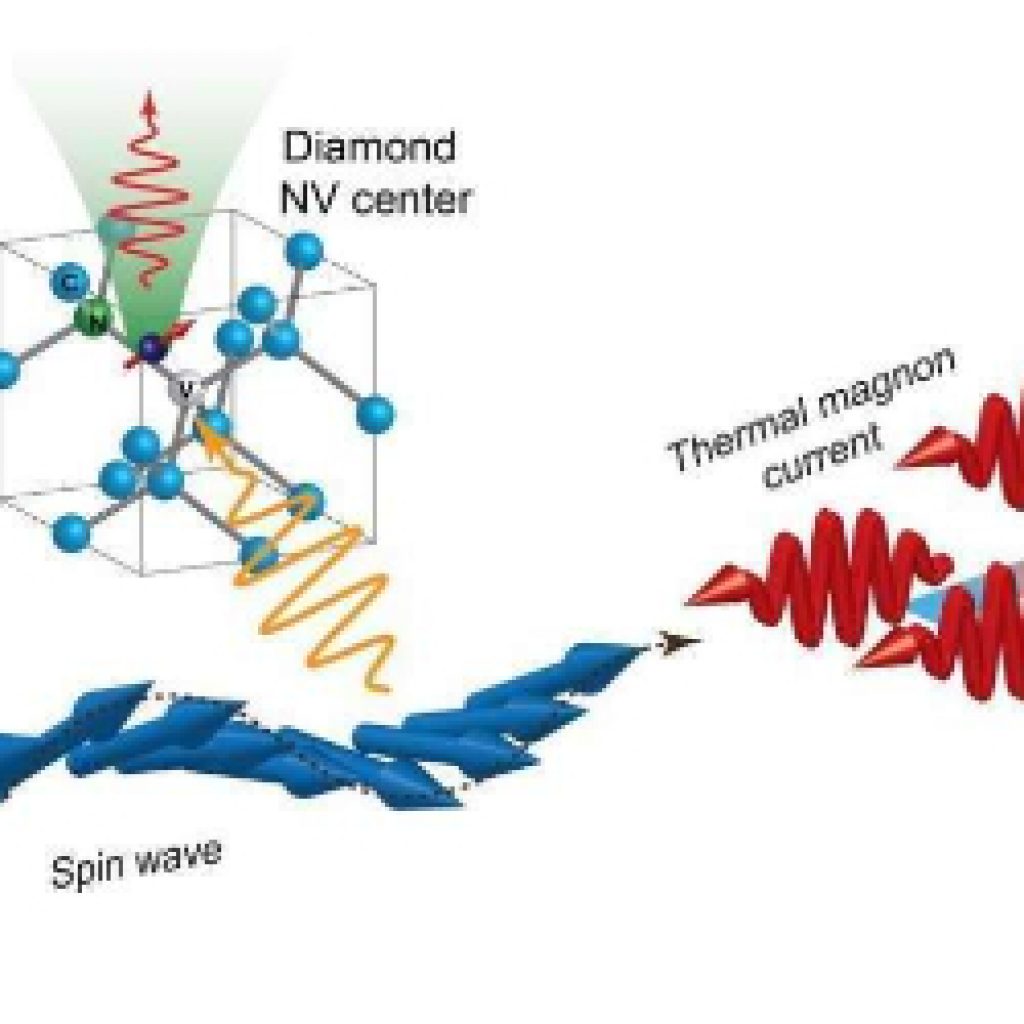(Phys.org) Nitrogen-vacancy (N-V) centers in diamond, basically a point defect consisting of a nitrogen atom paired with an adjacent lattice vacancy, has emerged as a key for high-resolution quantum sensors. Interestingly, recently, it has been demonstrated that N-V centers can detect coherent magnon. However, detecting the thermally excited magnons by heat using N-V centers is difficult since the thermal magnons have much higher energy than the spin state of N-V centers, limiting their interaction.
Now in a collaborative study published in Physical Review Applied, Associate Professor Toshu An from Japan Advanced Institute of Science and Technology (JAIST) and Dwi Prananto, a Ph.D. graduate from JAIST, along with researchers from Kyoto University, Japan, and the National Institute for Materials Science, Japan, have successfully detected these energetic magnons in yttrium iron garnet (YIG), a magnetic insulator, by using a quantum sensor based on diamond with NV center
To achieve this feat, the team used the interaction between coherent, low-energy magnons and N-V centers as an indirect way to detect the thermally excited magnons. As it turns out, the current produced by thermal magnons modifies the low-energy magnons by exerting a torque on them, which can be picked up by the N-V centers. Therefore, the method provides a way to detect thermal magnons by observing the changes in the coherent magnons.
These findings could not only open up new possibilities in quantum sensing but also pave the way for its integration with spin caloritronics. “Our work could lay the foundation for spintronic devices controlled by heat sources,” says Dr. An.
Diamond quantum sensor detects ‘magnetic flow’ excited by heat
